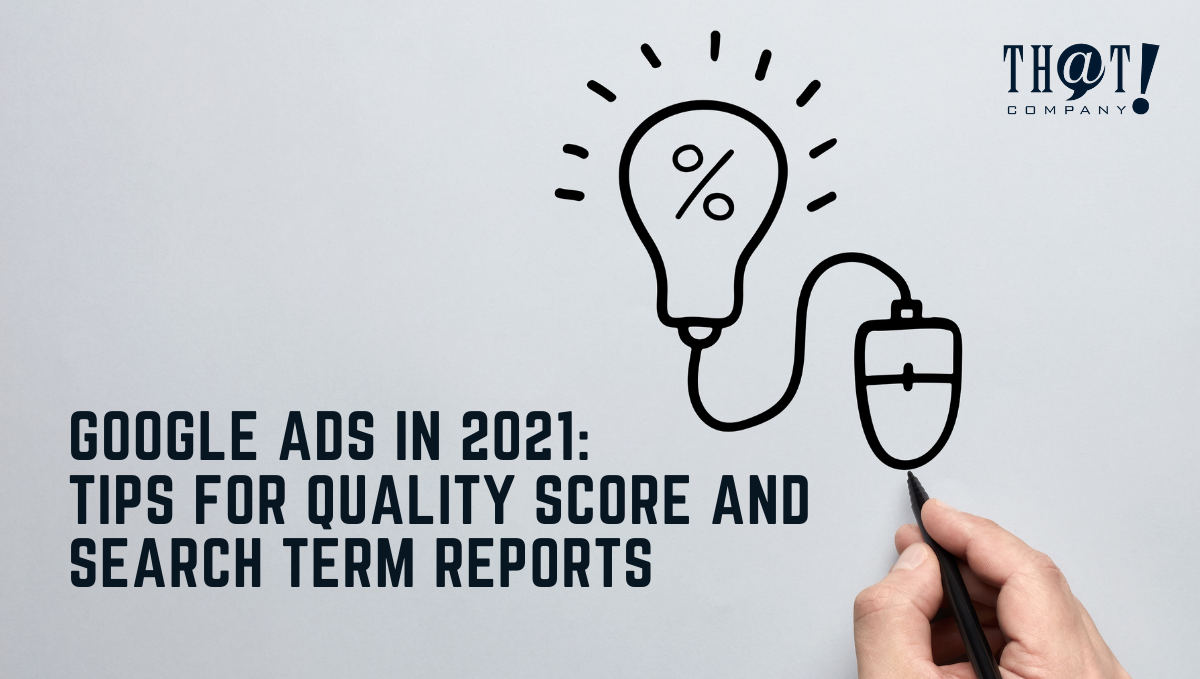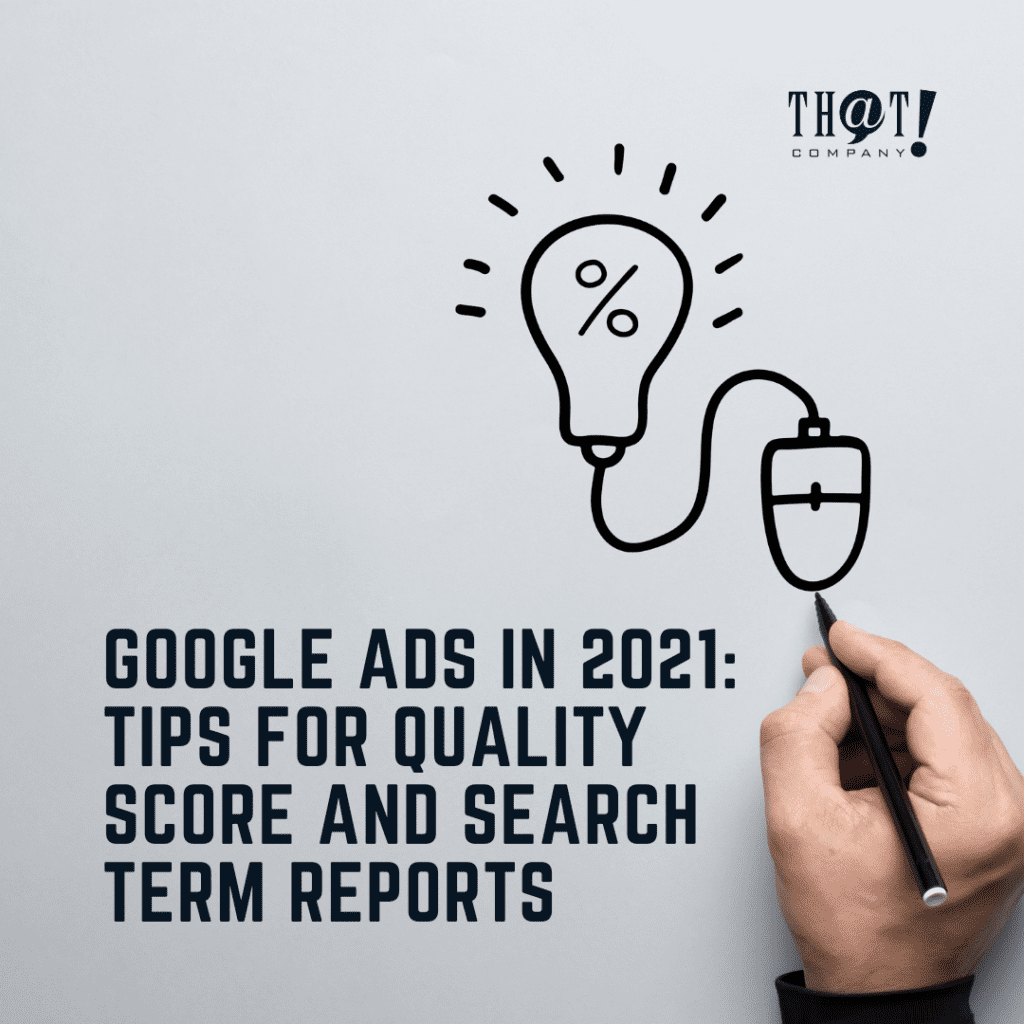
Practical Tips On Using Quality Score and Search Term Reports To Make Your Campaigns The Best They Can Be
As time has gone on Google has increasingly been making their ads harder to manage and stay competitive without seceding some of your accounts’ control to them. If you’re not used to looking at your account often and willing to keep up with the changes, it’s only a matter of time before your ad campaigns go off the rails. Yes, they will tell you that they are making things easier by making them more “automated,” but are they really getting easier to effectively manage, or are they just made to appear that way? I’ve been working with Google Ads for 14 or so years now and one thing I’ve always known to be true, Google never makes things easier on purpose. Well, at least not for you, but necessary evil and all that. On the surface, Google is very good at making it appear simpler, but at what cost and to who. Go back about three to five years and a well-structured campaign would consist of manual keyword adjustments based on a campaign structure basically pulled from your website model. I.e. you could break down campaigns and ad groups a fair deal simply by using the menu structure of your website as a template for your ad account. Of course not a one-to-one duplicate, but it would give you a very good starting point. Keyword match types would allow you to define exact searches and break apart ad groups based on performances and other key metrics. These functioned like a well-oiled one to one of what you would expect if you did it right. It was about that time that if you were paying attention, you could see Google had something up its sleeve, you started to see more and more indications that the plan moving forward was to push into the realm of automation and audiences. This had been something Facebook as an example had been doing for quite some time. Fast forward to the present and I’d say we are pretty much there. Do Google ads still work? Of course, they do, they can be just as effective as they have always been. But yes there is always a “but” …. You must know how they have changed and make adjustments accordingly. Many of the old ways are just not effective or gone completely. So are they easier for anyone at all, not really… they have just changed how they appear, what you can control to manage them, and what information you need to make those changes intelligently. Two of the major places I still look to effectively manage a campaign are the quality scores and the SQR’s (search query reports.)Quality Scores
 While Quality Score has always been important it has become a much larger measuring stick of a campaign’s success simply because it’s one of the few remaining places you can go to make large-scale improvements relatively quickly, and effectively track them. So what is Quality Score based on? The easy answer is that it’s a mysterious number Google assigns to your keywords to measure your ad relevance which determines whether your ad shows and how much the click is going to cost you to have it do so.
While Quality Score has always been important it has become a much larger measuring stick of a campaign’s success simply because it’s one of the few remaining places you can go to make large-scale improvements relatively quickly, and effectively track them. So what is Quality Score based on? The easy answer is that it’s a mysterious number Google assigns to your keywords to measure your ad relevance which determines whether your ad shows and how much the click is going to cost you to have it do so.
Search Terms Report
 While I will admit the Search reports (Goodbye SQR) have taken a hit in the last year or so, they are still incredibly valuable and a tool that needs to be used as much as any other. So what happened to the SQR report? The answer, Google happened. In the last year, Google has replaced the search query report with a report that used to be cover all search terms originating in your campaign to now only search terms that reach a certain threshold of volume. The new “improved” Search Term Report shows which search term triggered your ads, as well as showing how closely related the search terms are to the keyword to the ad it targeted. The importance of this list to identify new search terms and their match types and to know what you don’t want to be found for, and add those keywords to your campaign’s negative list.
So what really changed that was so bad? Because of the new click threshold, it’s much harder to manage on a micro level when you are really trying to fine-tune a campaign. Every one-off search query (you used to see) is potentially money wasted as you’ll never know to cut off the chance of having it searched again. This requires one to be much more aware of keywords running and match type they are running in, as to not trigger unwanted searches.
While I will admit the Search reports (Goodbye SQR) have taken a hit in the last year or so, they are still incredibly valuable and a tool that needs to be used as much as any other. So what happened to the SQR report? The answer, Google happened. In the last year, Google has replaced the search query report with a report that used to be cover all search terms originating in your campaign to now only search terms that reach a certain threshold of volume. The new “improved” Search Term Report shows which search term triggered your ads, as well as showing how closely related the search terms are to the keyword to the ad it targeted. The importance of this list to identify new search terms and their match types and to know what you don’t want to be found for, and add those keywords to your campaign’s negative list.
So what really changed that was so bad? Because of the new click threshold, it’s much harder to manage on a micro level when you are really trying to fine-tune a campaign. Every one-off search query (you used to see) is potentially money wasted as you’ll never know to cut off the chance of having it searched again. This requires one to be much more aware of keywords running and match type they are running in, as to not trigger unwanted searches.
 Which brings me to Google’s “other” change – Close Variants – what can I say, Google shame on you. Close variants, we are told are supposed to assist the Google engine and end-users in helping match the intent of the search. Does it? Sometimes, and other times it’s so far off base that you’ll wonder if a squirrel is running the show deep in the Google labs. Is it the end of the world? No, it’s not. But it is one more way that Google is oh so subtlety telling the account manager, “it’s really all about us, not you.” This alone is one more important reason that you have to be aware of the changes Google makes and understand what they mean for you.
I hope this helps you or your PPC management team to make the most out of your Google Ad campaigns in 2021. While there is much more to talk about such as the aforementioned search intent, as well as things like grouping for ROA’s and CPA, I will save that for another day.
Which brings me to Google’s “other” change – Close Variants – what can I say, Google shame on you. Close variants, we are told are supposed to assist the Google engine and end-users in helping match the intent of the search. Does it? Sometimes, and other times it’s so far off base that you’ll wonder if a squirrel is running the show deep in the Google labs. Is it the end of the world? No, it’s not. But it is one more way that Google is oh so subtlety telling the account manager, “it’s really all about us, not you.” This alone is one more important reason that you have to be aware of the changes Google makes and understand what they mean for you.
I hope this helps you or your PPC management team to make the most out of your Google Ad campaigns in 2021. While there is much more to talk about such as the aforementioned search intent, as well as things like grouping for ROA’s and CPA, I will save that for another day. 






















 Talk With Us
Talk With Us  Give Some Love
Give Some Love 


